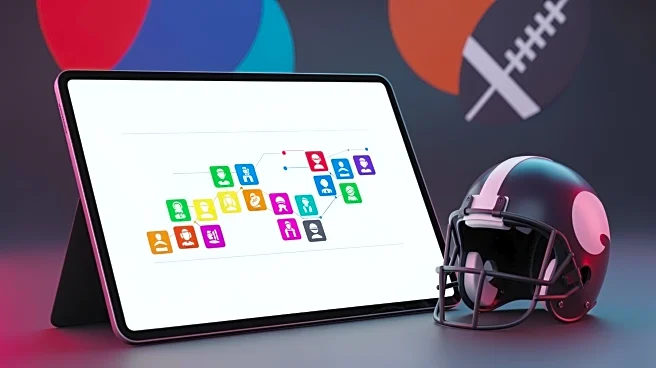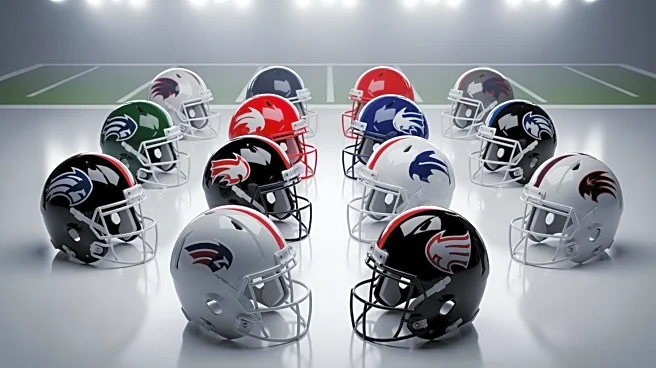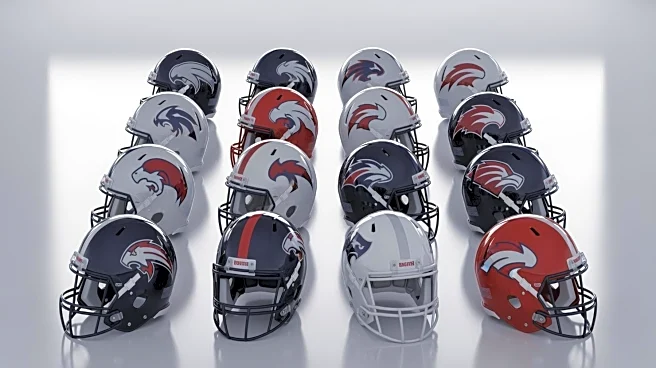What's Happening?
Yahoo Sports has released its comprehensive Fantasy Football Week 8 PPR Rankings Hub, aimed at assisting fantasy football players with their start-sit decisions. The hub consolidates rankings from various
analysts, including Justin Boone, Matt Harmon, Scott Pianowski, and Joel Smyth, offering a range of perspectives for players to consider. The rankings cover various positions such as running backs, wide receivers, tight ends, and flex options, providing detailed advice for point-per-reception (PPR) scoring formats. Additionally, the hub includes trade value charts to help players assess the worth of their fantasy assets.
Why It's Important?
Fantasy football is a popular pastime that engages millions of players across the United States, impacting both casual fans and serious competitors. The availability of expert rankings and advice can significantly influence player decisions, potentially affecting league outcomes and individual success. By providing a centralized hub for rankings, Yahoo Sports enhances the accessibility of expert insights, allowing players to make informed decisions that could lead to better performance in their leagues. This service supports the broader fantasy sports industry, which contributes to increased engagement with professional sports and generates substantial economic activity.
What's Next?
As the NFL season progresses, fantasy football players will continue to rely on expert advice to navigate player injuries, team dynamics, and match-up considerations. Yahoo Sports is expected to update its rankings regularly, reflecting changes in player performance and league developments. Fantasy players will need to stay informed about these updates to optimize their lineups and maximize their chances of success. Additionally, the ongoing analysis and commentary from Yahoo's team of analysts will provide valuable insights into emerging trends and strategies within the fantasy football community.
Beyond the Headlines
The fantasy sports industry has grown significantly, influencing how fans engage with professional sports. It has created a community where statistical analysis and strategic thinking are paramount, fostering a deeper understanding of the game. This development has implications for sports media, advertising, and fan engagement, as companies seek to capitalize on the growing interest in fantasy sports. The integration of technology and data analytics in fantasy sports also reflects broader trends in sports management and fan interaction.











